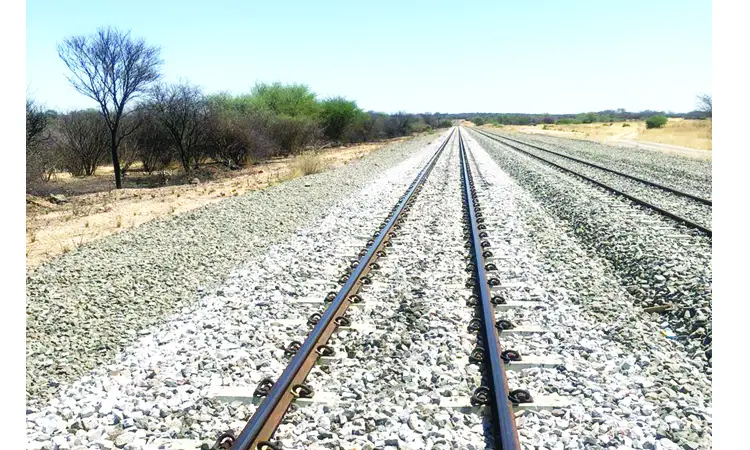John Mutorwa, the minister of works and transport, recently visited the upgraded Kranzberg-Tsumeb railway at Omaruru. The railway line links Namibia to Zambia, Angola, and the Democratic Republic of the Congo (DRC). It is a major rail corridor between Walvis Bay and northern Namibia.
Read also: Foreign loan hinders the implementation of Kaduna-Kano and Port Harcourt-Maiduguri rail projects
Rail infrastructure is important currently and will continue to be so in the future, according to Mutorwa. He said that the government has recently begun upgrading the existing railway between Tsumeb and Kranzberg, from Walvis Bay to Arandis. Mutorwa added that one can see the activities taking place at the site to upgrade the railway. He claimed that they are happy with the work being carried out.
The progress on the railway lines, according to Mutorwa, should be lauded.
Since the Trans-Kalahari and Trans-Caprivi highways have connected them to the neighboring countries, he said that it is crucial that they continue to upgrade and extend their railways, especially those that run from Grootfontein via Rundu up to Katima and in the east from Windhoek to Gobabis.
According to him, the railway line also needs to be upgraded.
Mutorwa said that the governments of Botswana and Namibia have agreed to work on the Trans-Kalahari Highway.
He claimed that without transportation, development is unattainable.
When did the Namibian government start investing in the Kranzberg-Tsumeb railway?
According to Johny Smith, chief executive officer of TransNamib, the government’s investment in the Kranzberg-Tsumeb railway began in 2014. This has already upgraded the company’s train operations.
However, TransNamib nevertheless needs the section to be completely renovated if it needs to further improve its train operations.
About 1,012 broken rails have been recorded throughout the whole railway section between the Kranzberg and Tsumeb stations as a result of the line’s incomplete upgrade.
He said that continuous maintenance is needed since it increases the risk of derailment. This is in order to guarantee preventative measures to improve line management.
Smith said that the completed phases of the rail line between Walvis Bay and northern Namibia also require extra rehabilitation. It also needs construction, and the extension of the existing rail line between Grootfontein and Katima Mulilo to link to Zambia.
Smith states that 61 km of the approximately 410 km total section has been upgraded entirely. Also, 328 km have been partly upgraded with 30 kg rails and need 48 kg rails to be fully completed, in addition to some reconstruction of the line.
Completion dates for Walvis Bay–Kranzberg rehabilitation project
He said that by the end of the first quarter of 2023, the 200-kilometer-long Walvis Bay–Kranzberg rehabilitation project should be completed.
Given the current restrictions through speed restrictions on this route, he reckoned that the improvements will enable TransNamib to transport more cargo on the route through a much faster and safer means of transport.
The Walvis Bay-Lubumabashi Corridor links the Port of Walvis Bay with northern Namibia, Zambia, and the DRC. The Corridor is currently used by more than 100 heavy trucks every day, according to Smith.
While the company was busy getting ready for the Ondangwa-Oshikango railway, the ministry conducted emergency repairs. This was said by Leon Steyn. He is the site supervisor of the contractors working on the improvement, of D&M Rail Construction.
D&M Rail Construction and TransNamib formed Namibia Rail Construction as a joint venture in 2014. It is said that D&M Rail Construction is functioning as the operating partner.
Currently, the company is the only privately owned company executing major local railway projects in Namibia.

